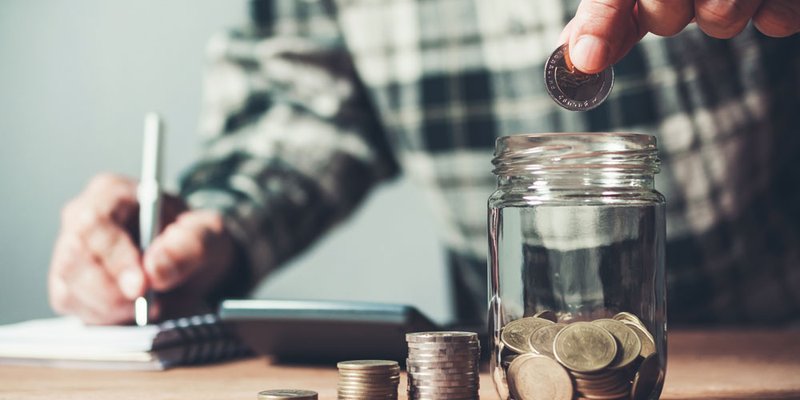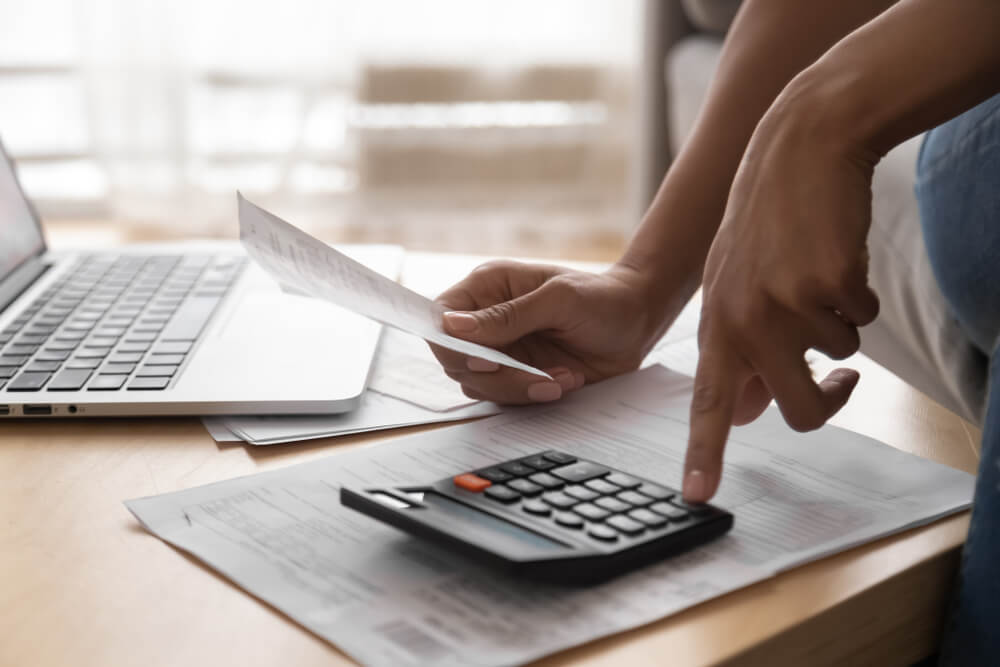
If you are not redirected within 30 seconds, please click here to continue.
Samedi: 10h – 16h HAE

If you are not redirected within 30 seconds, please click here to continue.
If you are not redirected within 30 seconds, please click here to continue.
RRSPs: Advantages Beyond Retirement Savings

Table of Contents
You know you need to save for retirement someday, but there is so much on your plate right now.
The thing is, even if you are far from retirement, and you have bills, debts, and maybe a wedding or a family, there is still at least one significant reason to start saving as early as possible.
Unless you put your money under your mattress (or in a chequing account), you earn something on your savings. It may be via a high-interest savings account or guaranteed investment certificates (GICs), or it may be capital gains in stocks or funds in a tax-free savings account (TFSA) or a registered retirement savings plan (RRSP).
The key is that as your savings grow, you get returns on the growth, not just what you put in. This strategy is called compounding, and the earlier you start, the more your money will grow compared to saving later. This view is especially true in an RRSP where the growth is not taxed (unlike other investments), leaving even more money to continue to accumulate interest and grow more significantly. Many savvy investors put their money in a registered account like a TFSA or RRSP as soon as possible to take advantage of this tax-free growth. That way, they can maximize the full potential these accounts provide.
Of course, there may be unusual circumstances that restrict your ability to put money into these accounts, such as losing your job during a pandemic. But whether you’re working in the gig economy or at a full-time job, “paying yourself first” can pay off in the long run.
The RRSP
While there are different ways to save for retirement, one staple of financial planning is the RRSP. It’s a savings vehicle generally intended for people likely to earn more in their working years than in retirement.
Benefits of an RRSP
Tax-deferred growth: You don’t pay tax on the money you put into an RRSP, only when you take it out. The idea is that you are likely going to have less income in retirement than while working. This scenario would ensure you are taxed less on what you withdraw than while employed because you may be in a lower tax bracket in retirement.
In practical terms, you deduct the amount you put in an RRSP in a given year from that year’s tax return, effectively reducing the amount of tax you pay that year by that amount. Then, in retirement, you pay tax on what you withdraw plus how much that amount has grown.
Contribution rules
Deadline: If you want to make a contribution that counts toward your 2020 tax return, the deadline is March 1, 2021.
Limit: The maximum contribution for 2021 is 18% of your earned income to a maximum of $27,830. You can find your maximum contribution amount for a particular year on your most recent Notice of Assessment from the Canada Revenue Agency (CRA). If you are a pension plan member, your pension adjustment will reduce the amount you can contribute to your RRSP.
Penalties: If you go over your limit (there’s a cumulative lifetime cushion of a total of $2,000), you generally have to pay a tax of 1% per month on excess contributions.
End date: The year you turn 71, you must close your RRSP and convert it to a different product such as a registered retirement income fund (RRIF).
This detail means that the younger you are when you start contributing, the more years you will have to build up savings and compound growth on your savings.
When to start contributing to an RRSP
There is no minimum age to start contributing to an RRSP. If you are making an income (other than odd jobs in your youth), have a social insurance number and file a tax return, you can start saving in an RRSP.
The other thing you build more of the younger you start is the contribution room. If you don’t contribute the full amount you are allowed to, say while you are young and not earning very much, you can carry forward that amount, as long as you file a tax return.
This means that if you start earning a lot and find yourself in a higher tax bracket, you can add your unused contribution room to your contribution limit to bring your taxes down in those high-earning years.
The flexibility of an RRSP is another reason to consider using one.
RRSP Withdrawals
Because RRSPs are tax-deferred savings, if you choose to withdraw your RRSP before retirement (i.e. when you are likely in a higher tax bracket), you will be taxed on the funds withdrawn. The financial institution that holds your RRSP will reserve a portion of the funds to send to the government, called a withholding tax.
The tax rate (other than in Quebec) is 10% for withdrawals up to $5,000, 20% for withdrawals between $5,001 and $15,000, and 30% for withdrawals over $15,000. But this doesn’t take into account your tax bracket, which means you might have to pay more if you are a higher earner.
You also permanently lose the contribution room you initially used to contribute that amount to your RRSP.
This feature reduces the potential value of your RRSP at retirement. Some people choose to withdraw early from their RRSPs to pay for emergency expenses or help their kids. But there are better options for savings that you think you will need to access before retirement, such as a TFSA, which doesn’t carry the early-withdrawal penalties of an RRSP.
There are, however, two specific ways of withdrawing from RRSPs that don’t carry tax penalties.
Home Buyers’ Plan
If you are a first-time homebuyer (and a resident of Canada), the Home Buyer’s Plan (HBP) allows money to be withdrawn from RRSPs to use as a down payment with no tax penalty.
It essentially works like a tax-free, interest-free loan to yourself. And it allows many people to pay down the amount needed to avoid paying mortgage loan insurance, which is required if the down payment is less than 20% of the home’s cost.
You can “borrow” up to $35,000 from your RRSP, as long as it is a type of RRSP that does not lock in funds. If you are buying a home with a spouse or common-law partner with an RRSP, you can both access the HBP.
You must repay the amount you withdrew within 15 years by paying back roughly 7% of the amount every year, starting the second year after withdrawal.
However, there are other conditions, such as the fact that you must have a written agreement to buy or build a qualifying home. The amount you are withdrawing must have been put into your RRSP at least 90 days before the withdrawal, and you must buy or build the qualifying home before October 1 of the year following the year of withdrawal.
Penalties: If you miss any payments, you will have to pay taxes on the amount missed.
This plan is specifically for the home you intend to live in (or if you are helping a related person with a disability). For instance, you are not allowed to use this plan if you are buying an investment property.
Additionally, potential homebuyers should be careful not to use this plan to buy a pricier home than they can afford, or they could struggle with mortgage payments and repaying the HBP.
Lifelong Learning Plan
Another program that allows people to use their RRSPs for a purpose other than retirement is the Lifelong Learning Plan (LLP).
The LLP allows you to withdraw up to $10,000 a year from your RRSP without tax penalties to finance full-time training or education in qualifying programs for you or your spouse/common-law partner. You can’t use this plan to fund your children’s education.
You can use the LLP as many times as you like if you have repaid all previous amounts.
You can withdraw up to $20,000 each time you use the LLP, and your repayments must begin no later than the fifth year after your first withdrawal. You have up to 10 years to repay the amount you withdrew starting the fifth year after you made your first withdrawal. The minimum repayment is 10% of what you owe each year.
Penalties: If you quit your education or training program, you will owe tax on the amount you withdrew. If you do not make a minimum repayment each year, you will pay tax on the amount you should have paid back. You will also owe tax on any amounts you withdraw over the yearly limit.
The decision of whether to use the LLP needs to be based on your financial circumstances. For instance, if you are going back to school because you are unemployed and want to retrain, you will likely be in a much lower tax bracket than someone tapping the LLP to upgrade their skills while still employed. For the unemployed person, other options, such as merely withdrawing money from their RRSP and paying tax at a much lower rate, or dipping into a TFSA with no tax penalties, might be preferable.
The bottom line
An RRSP can work as a pool of money to dip into for necessary expenses, like a down payment on a home or investment into your education. But keep in mind that any money you take out of your RRSP puts you behind in saving — even if you repay the amount, as you are losing out on that compounding effect.
On the other hand, if it ends up being an investment, such as a real asset that gains in value (hopefully, your home will), or an education that allows you to do better career-wise, it could be worthwhile.
Get money-saving tips in your inbox.
Stay on top of personal finance tips from our money experts!










